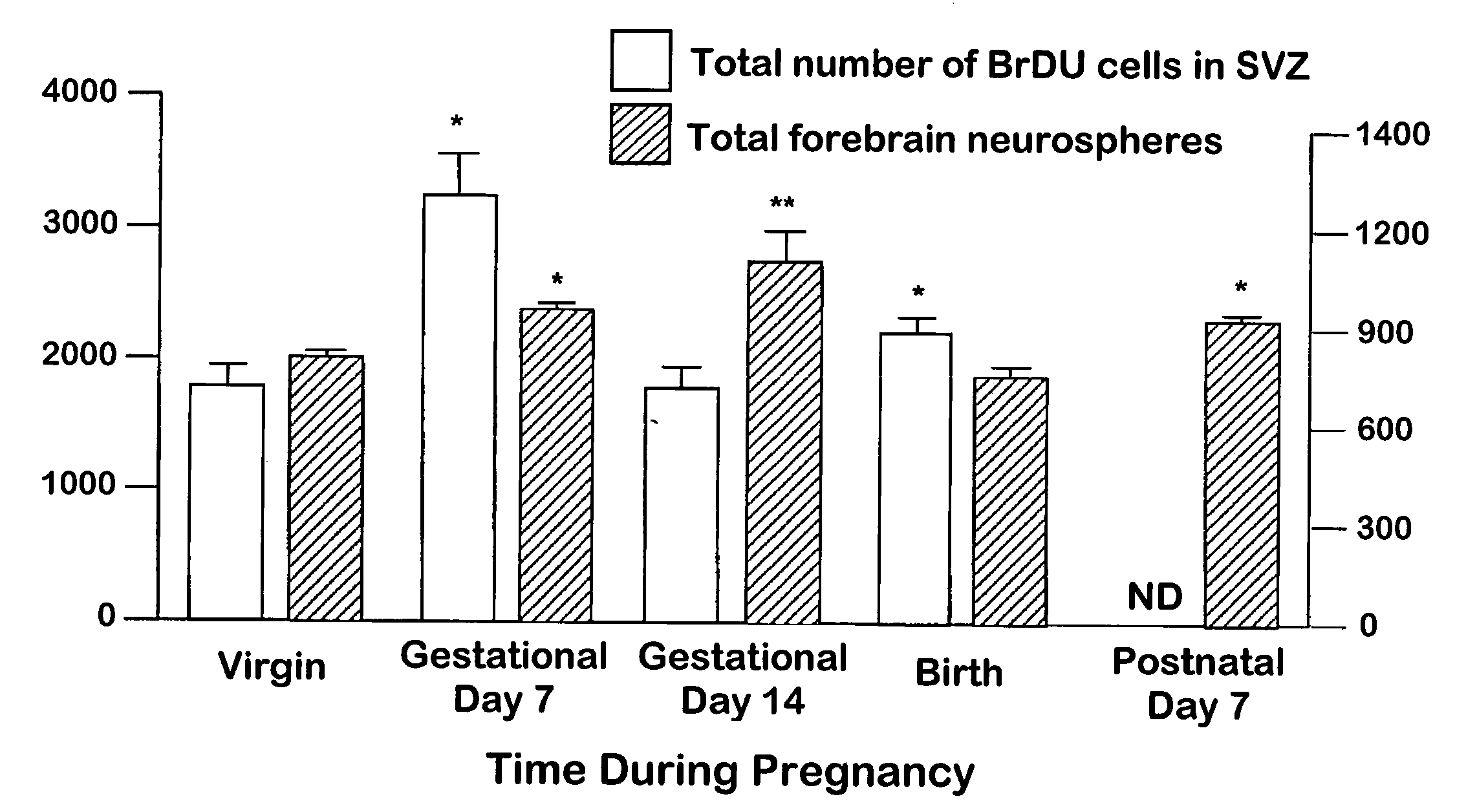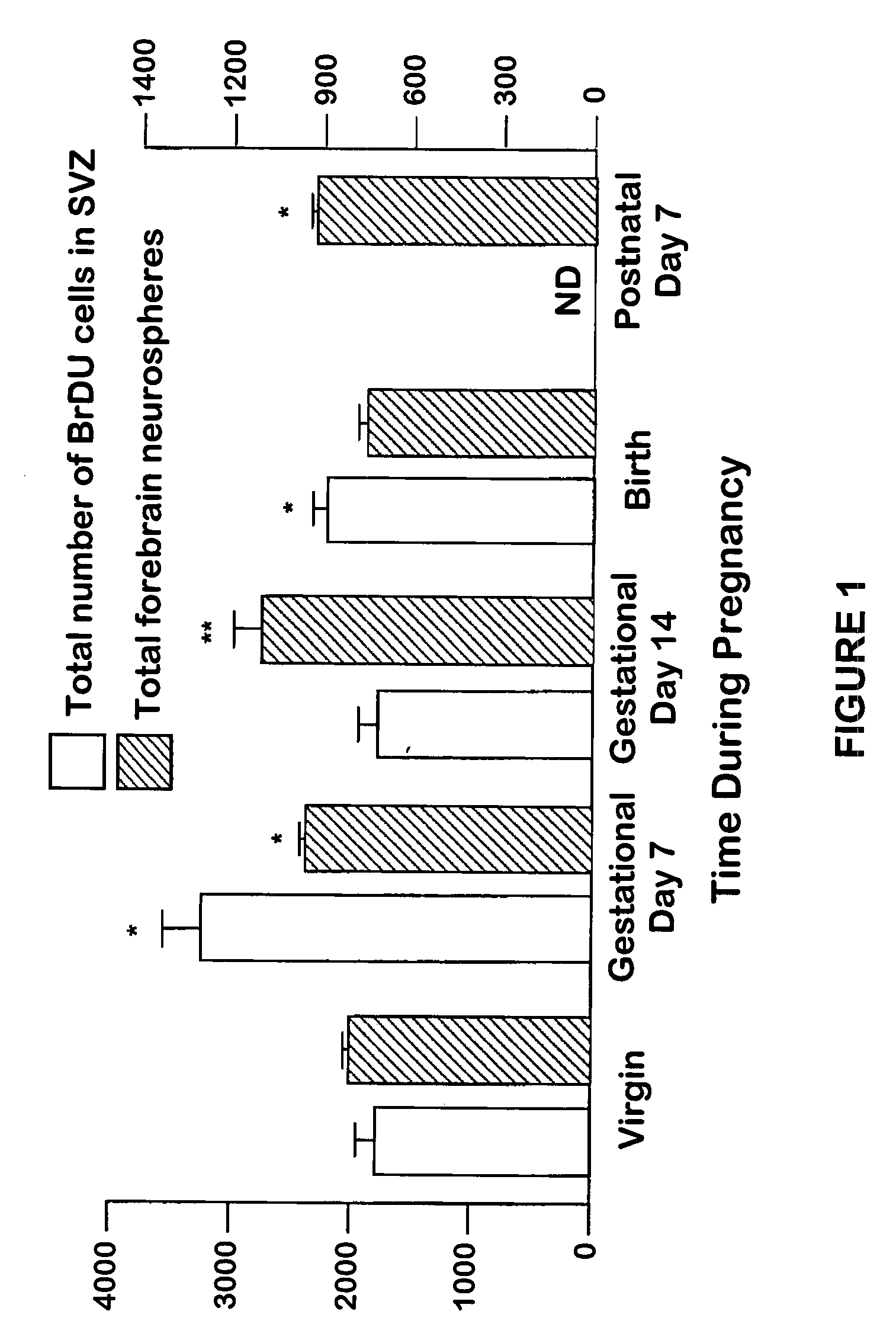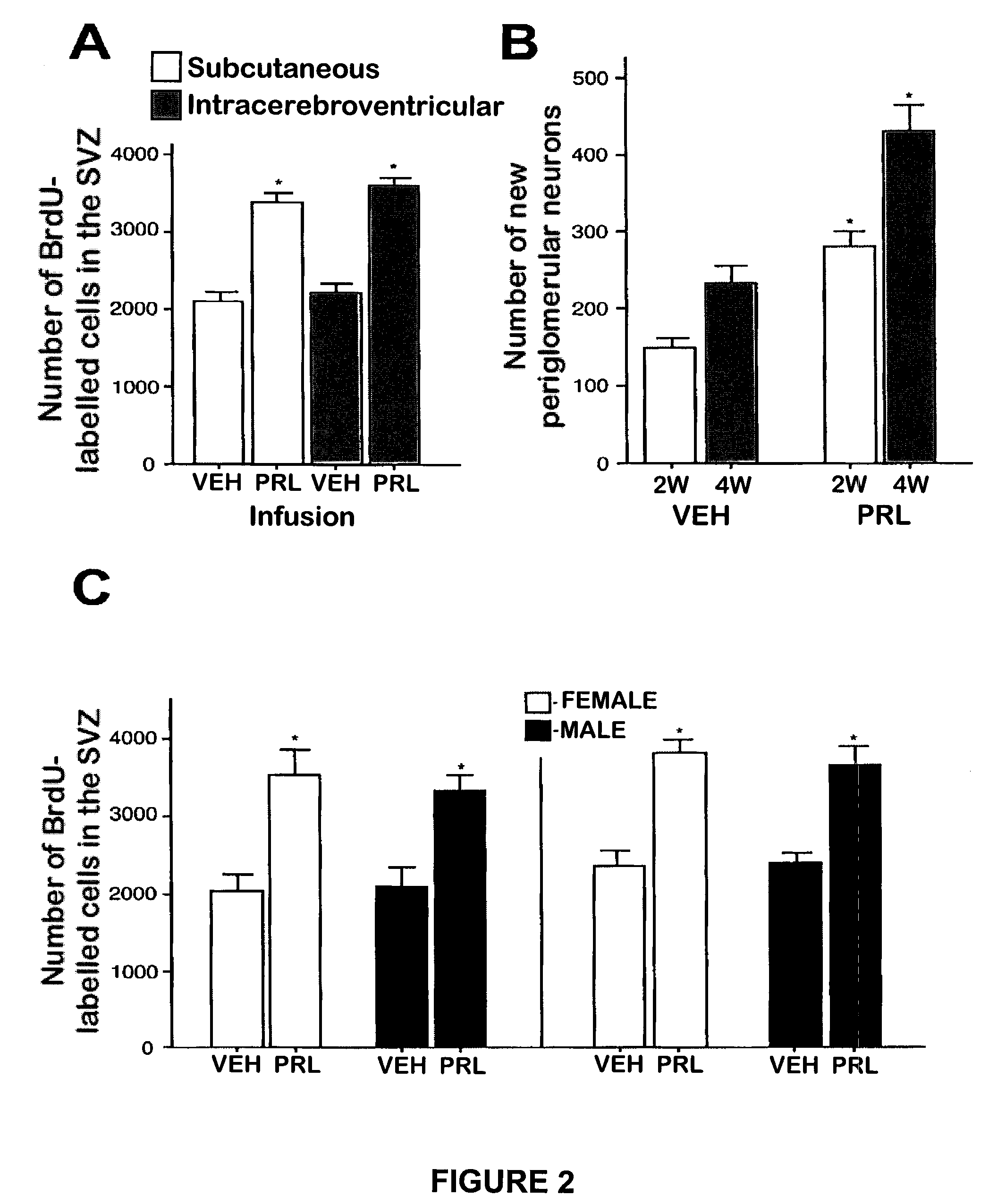Prolactin induced increase in neural stem cell numbers
a neural stem cell and prolactin technology, applied in the direction of specific peptides, peptide sources, peptide/protein ingredients, etc., can solve the problems of loss of neural cells, inability of these cells to carry out the intended function, and inappropriate brain function of affected brain regions
- Summary
- Abstract
- Description
- Claims
- Application Information
AI Technical Summary
Benefits of technology
Problems solved by technology
Method used
Image
Examples
example 1
Neural Stem Cell Number Increases During Pregnancy
[0171]The numbers of neural stem cells in the forebrain of adult CD1 mice were determined in pregnant mice (6-8 weeks old) and age-matched virgin mice in order to investigate the effect of pregnancy. The entire subventricular zones of the forebrain (both hemispheres) of adult female mice were collected at various points during pregnancy, dissected, enzymatically dissociated and plated in defined culture medium in the presence of epidermal growth factor as described in U.S. Pat. No. 5,750,376. These cells were allowed to develop into primary neurospheres. Seven to ten days later, the numbers of neurospheres, each of which is clonally derived from a single stem cell, were counted.
[0172]In parallel experiments, numbers of proliferating cells in subventricular zones of mice during pregnancy were also assessed. The mice were labeled with bromodeoxyuridine (BrdU), and sections of subventricular zones were subjected to immunoassays with Brd...
example 2
[0174]The two-wave pattern of NSC number increase during pregnancy and / or post-natal period described in Example 1 is similar to the pattern of prolactin levels in the same period of time. Prolactin concentrations are high during the first half of pregnancy, then decrease until the end of pregnancy when they rise again, presumably due to its role in lactation and maternal behaviors (reviewed in Freeman et al., 2000). Although prolactin was first identified as a reproductive hormone, it has then become clear that its functions are highly diverse. The effects of prolactin on the central nervous system (CNS) include actions on maternal behavior, sexual behavior, grooming behavior, feeding behavior, sleep-wake cycle, the firing rate of hypothalamic neurons, and the metabolism of neurotransmitters and neuropeptides.
[0175]To determine if prolactin is capable of increasing NSC numbers, we infused prolactin into 6-8 week old ovariectomized mice either subcutaneously ...
example 3
The Effects of Pregnancy and Prolactin on Olfactory Neurons
[0177]Since the SVZ neural stem cells are the source of ongoing neurogenesis in the olfactory bulb, we investigated if the effects of pregnancy and prolactin on neural stem cells are also reflected in olfactory neurogenesis. Virgin or age-matched pregnant 6-8 week old CD1 mice were injected with bromodeoxyuridine (BrdU) to label mitotic cells as in Example 1 on gestation day 7 or postpartum day 7. Four weeks after the BrdU injection, the number of BrdU labeled cells in various parts of the brain were counted. The pregnant mice that were injected on gestation day 7 had significantly more BrdU-labeled cells in both the granule and dopaminergic periglomerular cell layers of the olfactory bulb than their virgin counterparts. These results are consistent with the observation that pregnancy increases neural stem cells in the subventricular zone, which are known to form neuronal progenitor cells that migrate to the olfactory bulb.
[...
PUM
| Property | Measurement | Unit |
|---|---|---|
| molecular weight | aaaaa | aaaaa |
| temperature | aaaaa | aaaaa |
| depth | aaaaa | aaaaa |
Abstract
Description
Claims
Application Information
 Login to View More
Login to View More - R&D
- Intellectual Property
- Life Sciences
- Materials
- Tech Scout
- Unparalleled Data Quality
- Higher Quality Content
- 60% Fewer Hallucinations
Browse by: Latest US Patents, China's latest patents, Technical Efficacy Thesaurus, Application Domain, Technology Topic, Popular Technical Reports.
© 2025 PatSnap. All rights reserved.Legal|Privacy policy|Modern Slavery Act Transparency Statement|Sitemap|About US| Contact US: help@patsnap.com



